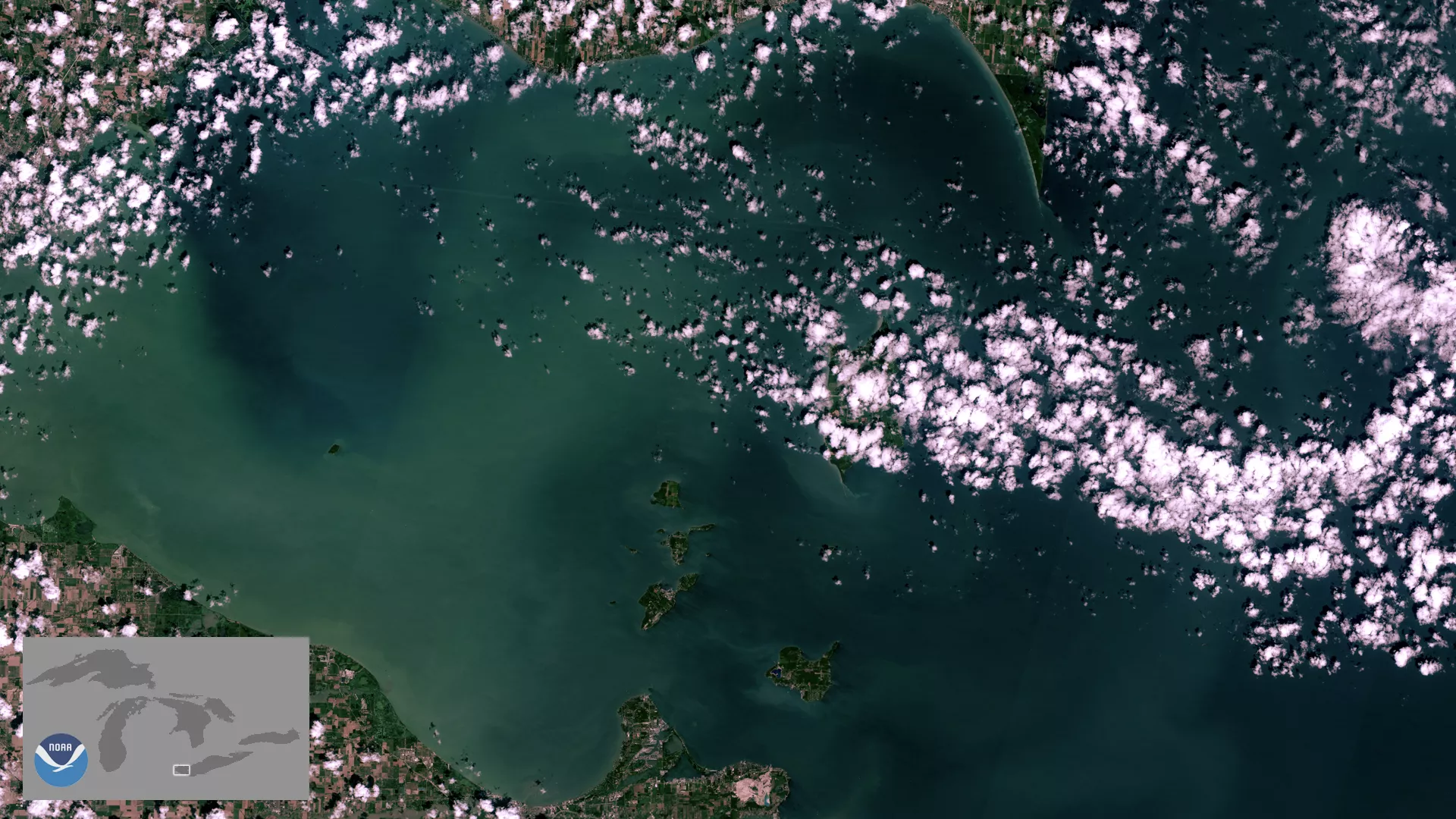
A Harmful Algal Bloom (HAB), seen by the Sentinel-2 satellite, has been growing in Lake Erie for the past few weeks, and now covers about 620 square miles of its surface. This is an area larger than Houston, Texas. Not all algae are harmful though, but this blue-green algae (or cyanobacteria), can grow rapidly and produce toxins that are harmful to wildlife and humans.
The HAB season typically starts in July and lasts into early fall, when temperatures rise and rains from earlier in the spring have washed nutrient runoff, such as phosphorus, from farms into the calm shallow lake water. Additionally, it has been shown that invasive aquatic species such as zebra or quagga mussels, present in Lake Erie, can help contribute to the growth of HABs because they filter/eat the harmless green algae rather than the cyanobacteria, which then multiply.
Researchers forecast that this year’s bloom will be one of the more severe in recent years, and believe that the warm weather and sun expected for this week should allow the bloom to expand further. The bloom has affected recreation on the lake, and water treatment plants have had to spend extra money adding chemicals to purify the water for drinking.
The Michigan Department of Environmental Quality recommends that since you can’t visually determine if an algal bloom is producing toxins, the best course of action is “when in doubt, stay out.” Additionally, they suggest that if you or a pet has come in contact with the algal bloom, to thoroughly rinse off with clean fresh water and to seek medical treatment if you experience any negative health effects.
This data from Sentinel-2 is made available to NOAA through a partnership with the European Commission’s Copernicus Programme.
